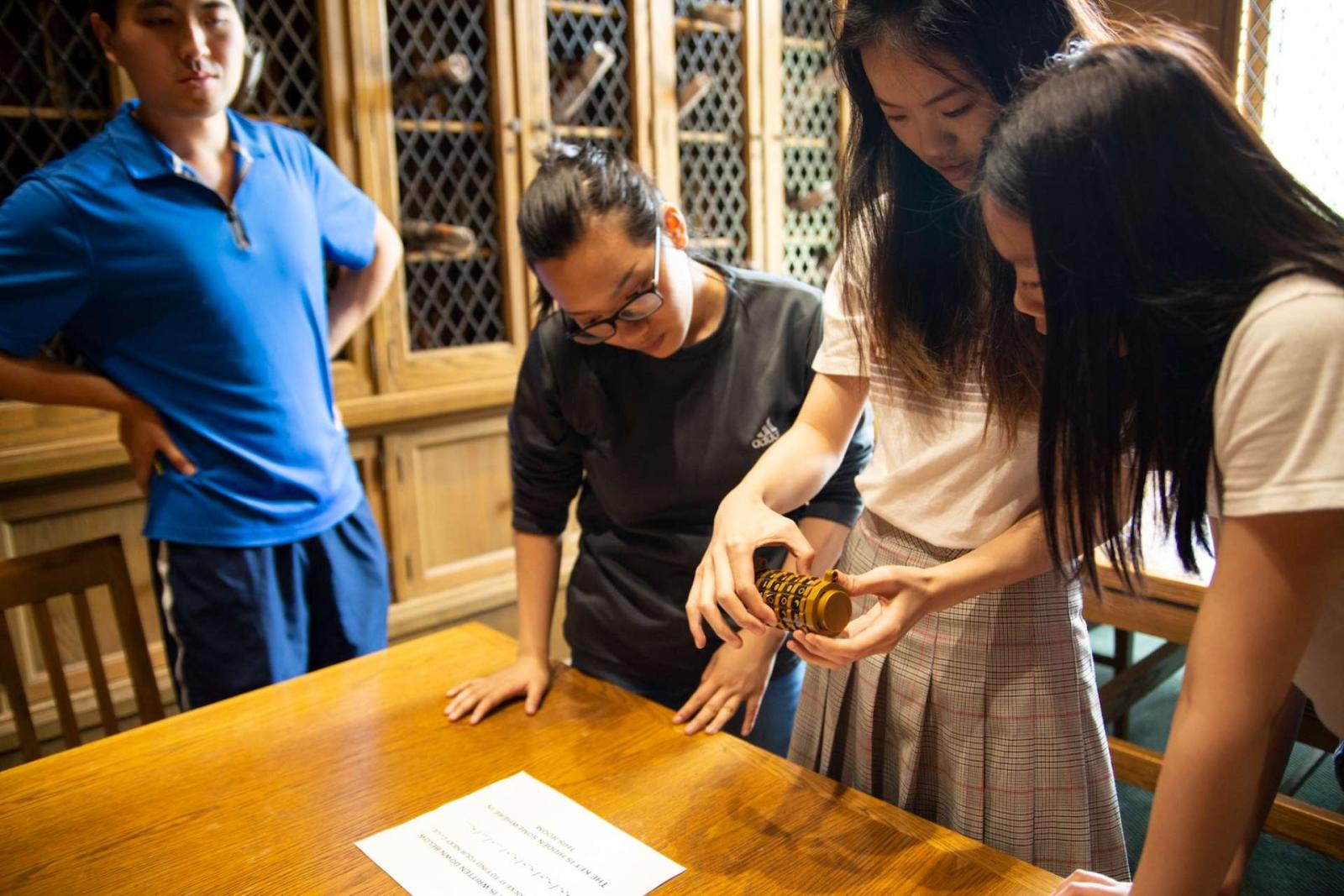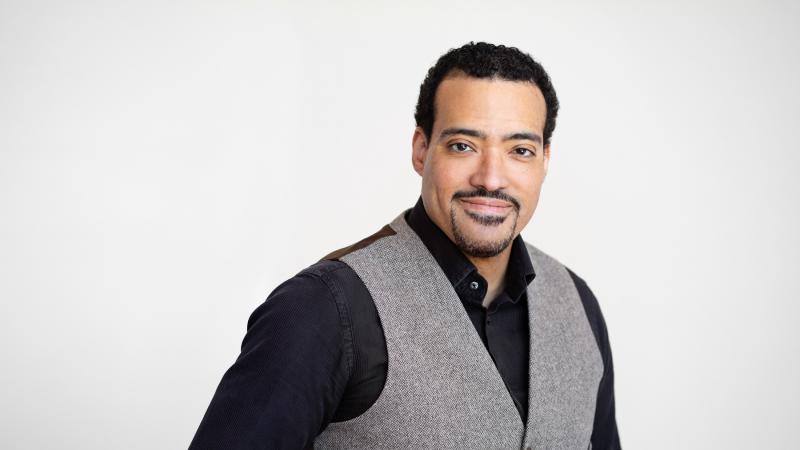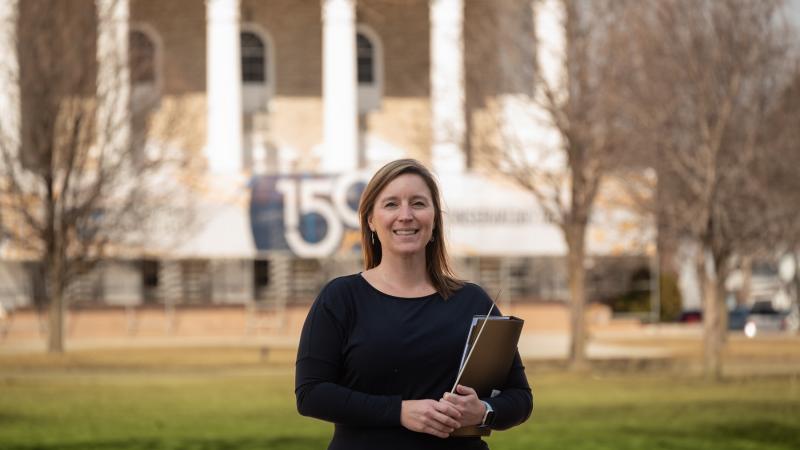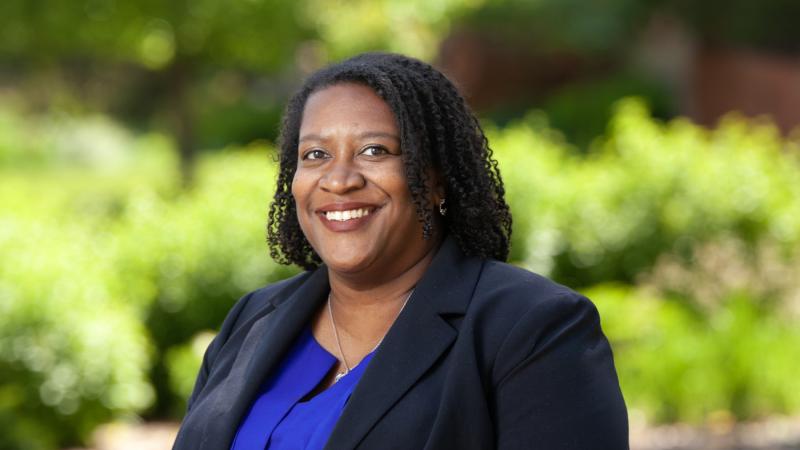Professors at Lawrence are continuously tapping into new and creative ways to assess how well students comprehend the information taught in their classrooms.
We caught up with two classes at the end of spring term where new approaches were being used, setting aside the traditional final exam or research paper — Lavanya Murali’s Anthropology 531 Semiotics course, where students were asked to build escape rooms, and Brigid Vance’s History 101 course, where students created a Lawrence history-focused podcast.
Sharing the history
History 101 is an introductory course, meaning there is a different professor teaching the course each year. When it was Vance’s turn to teach the course, she decided to incorporate a more interactive element for both her and her students to engage with. Rather than assigning a research paper, which is typically the final assessment for the course, Vance assigned her students to work together to create a podcast.
“You hone the same kinds of skills, you still write the script, you still do the research, but the tone is a little different” Vance said.
Throughout the term, students learned how to conduct research and explored the techniques historians use to do their work. With that knowledge in place, the students began doing research on Lawrentians from the past.
“I met with the university archivist and asked if this was a possibility, and she was totally on board,” Vance said. “We worked together a few months in advance of the class, figuring out what would be possible for students in the class to complete given the 10-week term.”
Using a list of noteworthy Lawrentians compiled by the archivist, techniques on research they learned in class, and a podcast they listened to in class as a reference, the students set out to create their own podcast on notable Lawrentians through the years.
“I care a lot about the way the class feels,” Vance said. “And that’s not something I think you can control, but I think you can try to help create a space where people can connect with one another.”
Vance called her new approach to assessment “very successful” — not only through the positive reaction from her students to the more engaging assignment, but also to creating something that could then be shared. They placed posters in the Mudd Library near the end of spring term to direct people to the podcast.
“The posters with the QR codes that linked to the podcast were up through reunion weekend (in mid-June),” Vance said. “So, all the alums coming in could learn something about the history of this place, too.”
Check out all episodes of the podcast.
Vance has gone the more traditional route for assessing her students in the past, but she has found that when taking a more creative approach, learning is a lot more enjoyable for both her and her students.
“At least for me, I get very excited when doing something creative and collaborative,” Vance said. “So that’s something that I feel is really authentic and honest, and if I am honest with myself, it allows for others to be honest with themselves. Ultimately, I think it makes for a better learning environment.”
Vance would like to thank the following people who helped make the project possible: David Berk, Gretchen Revie, Erin Dix, Debra Walker, her History Department colleagues, and all of her Spring 2019 History 101 students.
Reading the signs
In Murali’s anthropology course, students learned about the different ways in which signs can be expressed, shown throughout the world, and how to make meaning of them.
“A sign can be anything from a street sign to the clothes someone wears,” said Joseph Wetzel ’20, a student who took Murali’s course. “So, anything that signifies something else is a sign.”
Throughout the spring term, the class built on this idea of signs being more than we typically think of.
“A lot of understanding of how information is translated through signs is thinking about shared cultural knowledge,” Wetzel said.
All of the work they did throughout the term led to students breaking into groups and creating their own escape rooms in various places around campus.
“The students spent all term drawing on the semiotic theory they were learning in class to understand how clues work as signs, and how escape rooms are semiotic spaces,” Murali said. “They then applied this knowledge to creating their own escape rooms.”
During class, they looked at different escape rooms online to familiarize themselves with them. At the end of the course, they used all the knowledge they gained about signs having deeper meanings based on cultural knowledge to create the escape rooms, and opened them to others on campus to solve.
“There are clues that refer to different buildings on campus, and we have clues (that refer to) Lawrentians,” Wetzel said.
It was a fun way to also explore Lawrence culture.

“Escape Room: Library” was created by a group of students in Lavanya Murali’s Anthropology 531 Semiotics course. “I think it went well,” Murali said of the hands-on approach.
One of the escape rooms, created by Amy Courter ’21, Hayoung Seo ’19, and Wetzel and titled Escape Room: Library, was based on a concept that students could identify with. “It’s based on a student waking up from her dream, because they fell asleep while studying for finals,” Seo said.
Murali has been incorporating innovative learning methods into her classroom and has seen it have a positive impact on the way her students react to learning.
“I have increasingly been focusing on engaged, hands-on assignments as a way to help students understand and apply what they learn in class, and this assignment follows that pedagogic strategy,” Murali said. “I think it went well, and I’m very proud of my students.”



